Long weekend in Kembata - Travel Note
A three day travel summary around attractions in Kembata
I spent the weekend in Kembata, with Hasset Hiking traveling in and around Durame, and visiting fascinating natural landscapes that humbled me to my core. The area is very rich with natural attractions, culture, and history. Even though it's less than 300 km and a six-hour drive, it's not a well-explored and visited area. So here is an introduction for the people who haven’t discovered the hidden gems of Kembata, and a rewind of unforgettable stories for people who already visited Kembata and its people.
I have traveled with Hasset Hiking before and I couldn’t recommend them enough! By now I am already a family and I made awesome friends on the way. A small group of adventurers with a passion for nature and wilderness.
We took off early Friday and headed to Durame, the capital of Kembata Zone. We had a light breakfast in the car and took a coffee break at Batu (Ziway). We arrived at Durame late afternoon and were welcomed by the Visit Kemebata team, a professional team with solid experience as a tour guide and deep knowledge of the area. Visit Kembata team is not a government-run tourism commission like Visit Oromia, but a group of self-motivated local young tour guides, and I was amazed at how professional and hospitable they were. They love their people, and their attractions and don’t hesitate to take you deep and proudly show you around.
We had lunch in Durame, it was a well-needed delicious treat after a long ride. Jan Café was a cozy and well-run restaurant. We enjoyed the small buffet, prepared just for us. The local delicacy cabbage and seasoned cottage were nourishing. After lunch, we had our coffee and got a chance to ride a motorbike around the city. Durame is a lovely town with welcoming people. Everybody was happy to show us around.
The Twin Ajora Falls
We passed Hadero town and turned to a dirt road to go to Ajora Falls. Picked up two policemen for scouting on the way. When we got to the Ajora Falls gorge, it was almost dark. We unloaded the tents and mattresses and walked down the hill to the campsite. The campsite was at the edge of the gorge with a mesmerizing view of the falls. The white noise coming from the Twin Falls is the perfect background music one needs when camping in nature. The moon also didn’t disappoint, she welcomed us with its full light making the night bright and blissful. I couldn’t ask for a better location and setup!
The Visit Kembata team set up the tent and quickly started the fire to cook us dinner. They made fried fresh goat meat. It was the most delicious የብረት ምጣድ ጥብስ (Tibs) I had while camping. There was also beer, that goes well with the meat and campfire under the bright moon overarching the waterfall.
By the time dinner was done, everybody was in the mood for a good time. Music started playing, some of us were dancing, some started group chat, some were gazing at the moon and meditating. The ambiance was so beautiful, the weather was perfect and the fire was the right temperature. We spend most of the night next to the fire, talking and playing various games.
The next morning we rise early to see the sun rising. Seeing the sun and the beautiful mountain was a humbling experience. The breath and surrounding green view are the grounding I needed. I sit down at the edge quietly and absorb the morning beams.
We packed our stuff, cleaned the area, and drove to a nearby farmer's house for breakfast. We are served a very palatable scrambled egg, Kinche, Siga Firfir, and Rice. I keep getting impressed by Visit Kembata’s hospitality and professionalism. The breakfast is beyond my expectations, and they make us feel like an honorable guest, not a random group of hikers. The first destination of Saturday was Sarobira field but we were already off schedule and to save time, we skipped Sarobira and directly headed to the natural bridge, locally known as ‘Yeigzer Dildy’.
Ye Egzer Dildiy (God’s Bridge) or ‘Buchachi Zaramma’ in Kembatissa Language
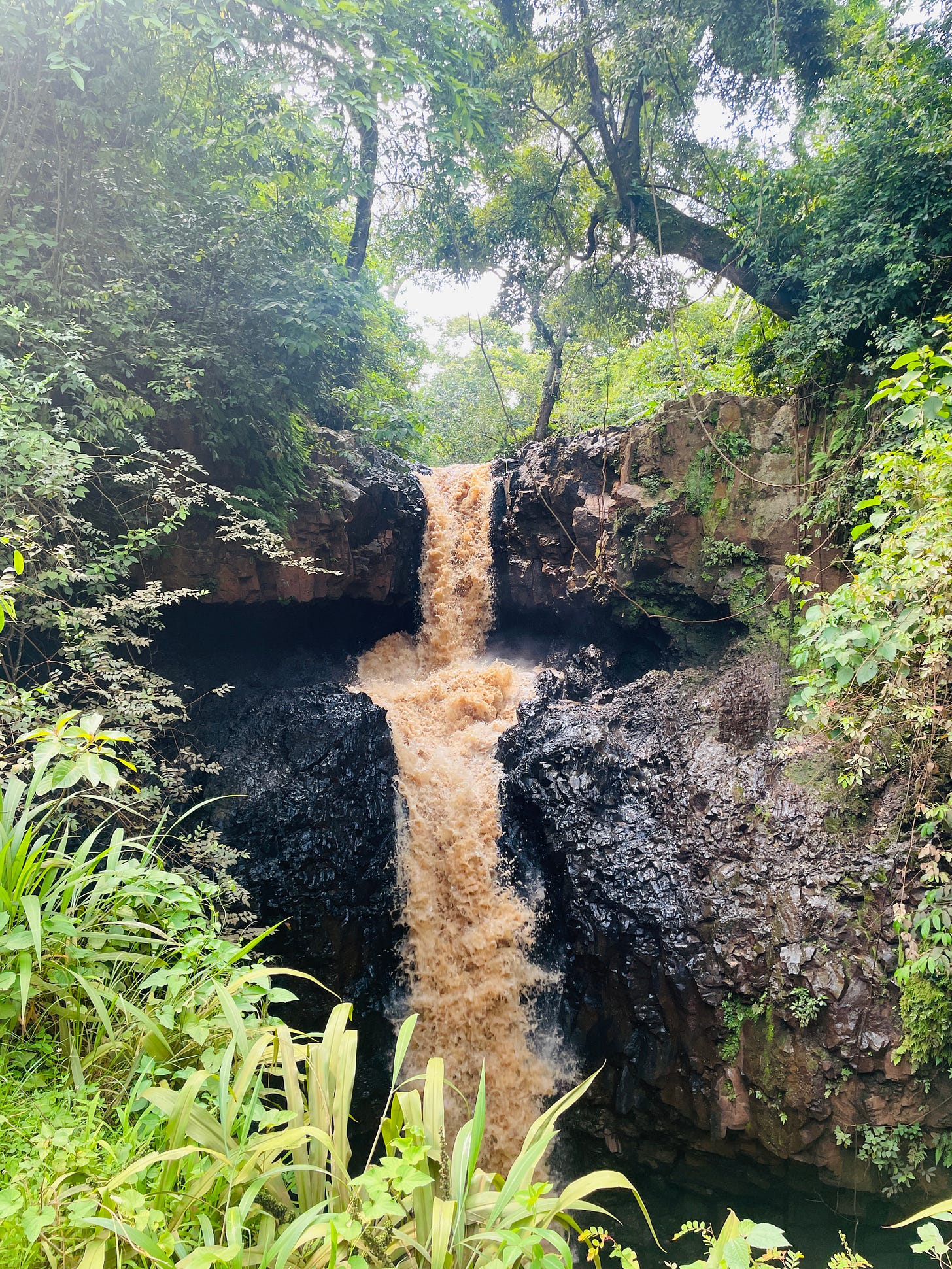
We traveled back a few Kilometres to Hadero town direction, and we stopped by the roadside and walked down the hill. We passed through beautiful Ginger farm fields to get to the mysterious waterfall. The waterfall is found in a shallow gorge and you can hear the roar from afar. Going down to the fall, you need to carefully ascend a scary and narrow path. But once you go down and see the roaring waterfall, it is worth it!
This is a peculiar waterfall and an enthralling geological formation. The fall has two steps, and the murky brown Sana River falls on eroded black igneous rock. Then the water passed underneath a natural bridge to finally join the Omo River, hence the name “Ye Egzer Dildiy” (Gods Bridge). It's truly a natural wonder!
Kembata is blessed with a lot of mountains, springs, and rivers, and due to the nature of the landscape, there are a lot of year-round rivers and waterfalls.
Doje Water Fall
The next destination was Doje Waterfall. Unlike Ye Egzer Dildiy, this was near the main road, we only walked like 20 minutes from the main road and got to the beautiful Doje Falls. Doje is found in an open field and getting there was not as hard as the previous fall. As soon as we got there, we took out our clothes and jumped into it. It's almost impossible to just stand there and see. It’s hard to resist the charm of Doje!
The water pulls you in. The water falls from around a 30m cliff onto a sandy mud. We took a shower, played around, and stayed there for like an hour more until everyone was exhausted. This was a much-needed refreshing moment after a hike to Ye Egzer Dildiy on a scorching sunny morning.
Later we drive to the nearby Shinshicho Town for lunch. They took us to a butcher and we feasted on meat like there was no tomorrow. Some of us had Kurt, some Shekla Tibs, and others ordered Kitfo. It was a heavy lunch, and we ate like a proper Saturday afternoon family lunch with drinks. Later we went to Yichalal Hotel for a coffee, it was a big, clean hotel with a beautiful garden. We all were surprised to see such a good hotel in a small town far away from the Addis. Yichalal Hotel looks like a resort in Bishoftu or Adama, with great service. We had our coffee and took some rest before heading to Hambericho. Meanwhile, they brought us big divider cords to charge our phones and power bank. As if the hotel was there to serve exactly people like us, we were treated perfectly to our needs.
Hambericho Mountain
We drove back to Durame, picked up food for dinner and some local ጠጅ and አረቄ and started ascending the mountain. The paved road was poorly maintained and it was difficult for our Toyota Coster bus. The 7 km paved road to the top of the mountain almost took us an hour. Fortunately, we arrived at the Hambericho campsite on time for the sunset. Hambericho was the main attraction we all are here for. We unloaded our stuff and quickly headed to the famous 777 stairs to the top of Hambericho Mountain.
The stair was built recently, four years ago to be exact and it has already become the bacon of Kembata Zone tourism. The stairs make it easier to hike the steep slope of Hambericho. The mountain is one of the highest peaks in southern Ethiopia with an elevation of 3058 meters above sea level. Hambericho has a lot of historical, cultural, and spiritual significance to the local Kembata community.
The stairs have number plates so that you know exactly where you are while climbing. The climb was a bit difficult, and not for amateur travelers. Hiking a 777 stair is similar to going up 35 floors on a high-rise building. The best part is, that you are not alone, it’s a nice group hike and there are benches on the side if you want to pause and recharge your energy with the breathtaking view.
We arrived on the top perfectly for the sunset. The top of Hambericho is a beautiful open and green plateau that looks like something out of a fantasy movie. And it's not even a small flat hilltop, it’s a huge open field that you can see to the edge of the horizon. For a second I couldn’t believe what I was seeing, it looked AI-generated, it looked like the field where Teletubbies lived, it brought childhood memories, and it also looked like a Windows wallpaper. My mind had to process all the emotions I was having walking on the top of the hill. Simply put, words can't explain how majestic it is.
We ran, lay on the grass, took a picture, and meditated silently watching the sun go down with a cold breath. The view makes you forget you climbed 35 stories. It was a refreshing and calming moment.
We descended back to our campsite and set up our tents and campfire. It was a misty and cold evening. We had another የብረት ምጣድ ጥብስ (Tibs) for dinner, cooked right on the campfire in front of us.
Later while enjoying the ጠጅ and አረቄ, our guide told us the fascinating history of the mystical Hambericho Mountains and the relationship the people of Kemabata have with the number 7. The Kemebata people have a unique and almost spiritual relationship with the number 7, hence the stairs are made to be exactly 777. The number is called “Lamela” in the Kemebatise language.
It is believed that the first seven kinship groups of tribes of the Kembata lived on Mount Hambaricho from ancient times, and the Kembatas’ still refer to these groups as "Hambaricho Lamala", (the seven kin-groups of Kembata) as the original/founding groups of the Kembata People. There is a covenant stone on top of Hambericho, where the founding tribes of Kemabta established their Kingdom. Hambericho was also where the last king of Kembata Kingodom, Woma, used to live and the people used to celebrate annual festivities in the past. Hambericho is sometimes referred to as the cradle of the Kembata people.
In Kemebata society, when you get married or want to resolve a conflict, each party sends 7 elders. There are known to be 7 mountains, 7 rivers, and 7 springs in the area. For a new King to be sworn in, he has to fast 7 days, and there are many more examples of the number 7 used in the everyday life of the Kembata people.
We stayed late while listening to the amazing story about the mountain we just climbed and as the fire started dimming, we went back to our tents.
The next morning, we rise early at 5:30 AM to see the sunrise, to climb the mystical mountain again. Even though the stair is steep and most of us are physically exhausted, we couldn’t miss the sunrise on the top of the mountain. What we saw a day before was good enough to entice us to climb again. The sunset was humbling and you can imagine what the sunrise will look like. We ascend the stairs in the cold and clearing morning before the mist falls. The air was heavy, and breathing gets difficult as you go up. It’s the athlete's weather, where you can train your lungs at high altitudes for better endurance. Most of us took our time and struggled to get to the top. But when we finally arrive, the breathtaking view takes us in awe again. We spent about an hour looking at the fast-moving cloud and the sun rising.
Gemasha Hot Springs
We packed our stuff and left Hambericho to visit Gemasha Hot Spring. While descending the mountain, our guide showed us a bee farmer's cooperative compound. We stopped to see the hives and test some honey on the way. Even though it was an early Sunday morning, the guard opened his door with a smile. Some of us want to buy the organic honey that is produced right at the back of the compound. While he packed the honey, he brought us a large sample with spoons for a test. The honey was sharp and tasted amazing with a flowerish smell. The compound was full of flowers and fruits, you can see why the honey smells and tastes like that. They also brought us some lemons and passionfruit, they picked it right before our eyes. The hospitality and generosity of Kemabata People is truly humbling and we all are immensely grateful!
We arrived at Gemasha Hot Springs, it’s a natural hot spring used for healing and recreational purposes for ages by the local people. But now a youth cooperative developed it into a well-established pool and bath service. We were surprised to see a well-maintained bath and three very clean swimming pools. We took a shower and jumped into the pool. The host spring was a much-needed heat for the sore muscles and knee after climbing the mountain twice. Even though it was Sunday, it was not very crowded and the people swimming with us were very friendly, minding their own business and some were trying to teach us how to swim. I took some lessons on how to backflip. There were also professional lifeguards, which I didn't expect I would see some 300 km away from Addis in the small Shinshicho town. I was humbled again and again.
We left Gemasha and went back to the town for Breakfast/lunch. It was already 11:30 AM when we arrived at Yichalal Hotel. The same hotel where we had coffee yesterday. A full-course buffet was being set up when we arrived. It was a delicious lunch as usual! We had egg, pasta with veggies, chechebsa, and fetira. Of course, coffee and drinks were also there, and charging our devices one last time before we headed back to Addis.
We were late for the road, and the driver was a bit anxious that it might get dark when we got to Addis. We drove back to Durame, then Alaba, then Shashamene…… took a coffee break at Batu/Zaway, and around 7:30 PM we arrived at Tulu Dimtu.
As a final note, I want to thank Hasset Hiking, a small travel organizer, and am also immensely grateful for the Visit Kembata team. They made us feel at home, not a tourist at all and that is all we wanted.
If you are inspired and want to visit Kembata, please reach out to:
Hasset Hiking: Instagram
Visit Kembata: Instagram

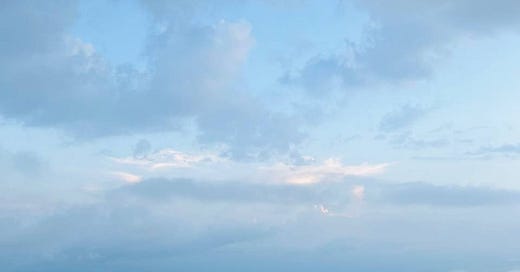



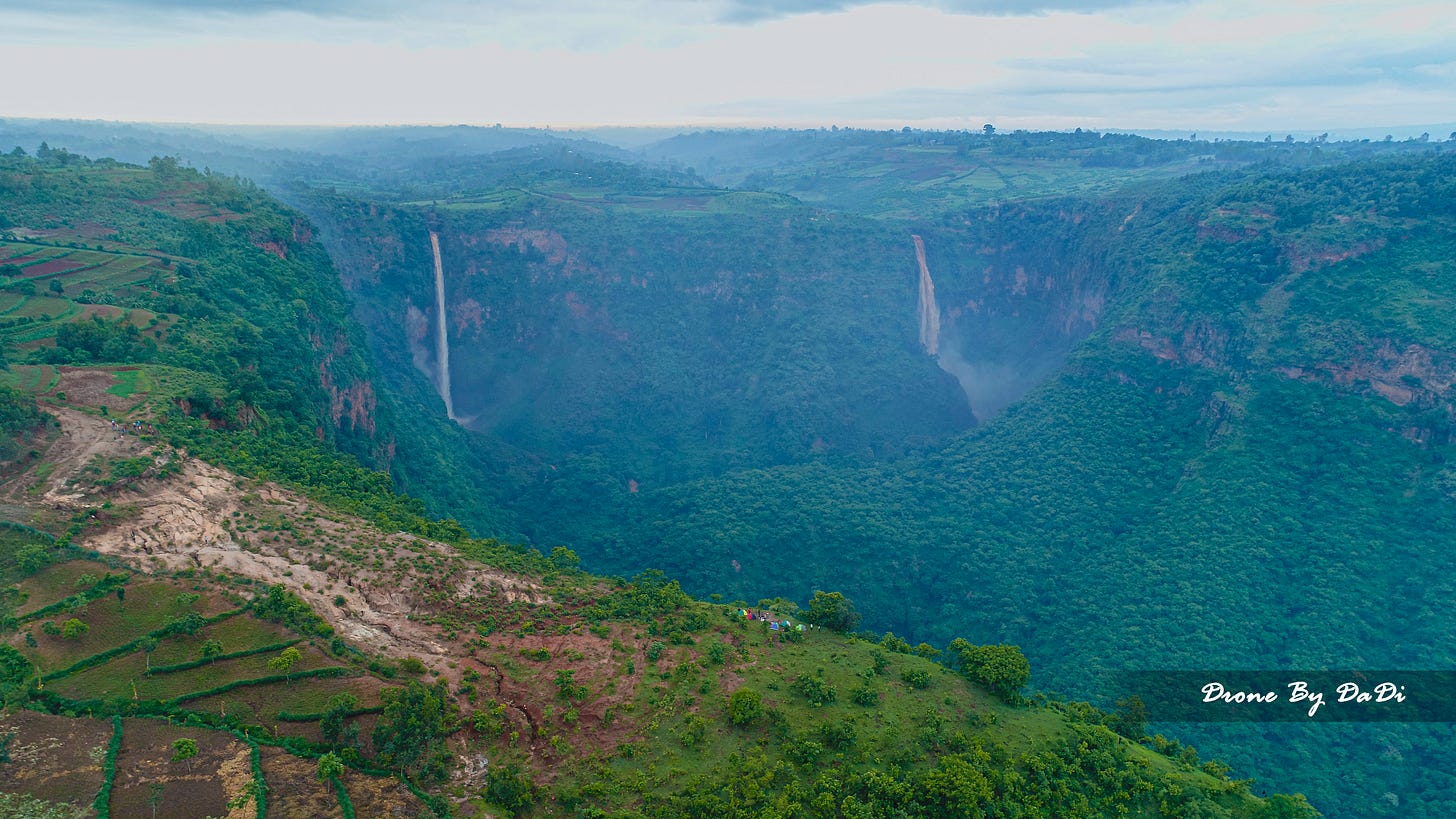
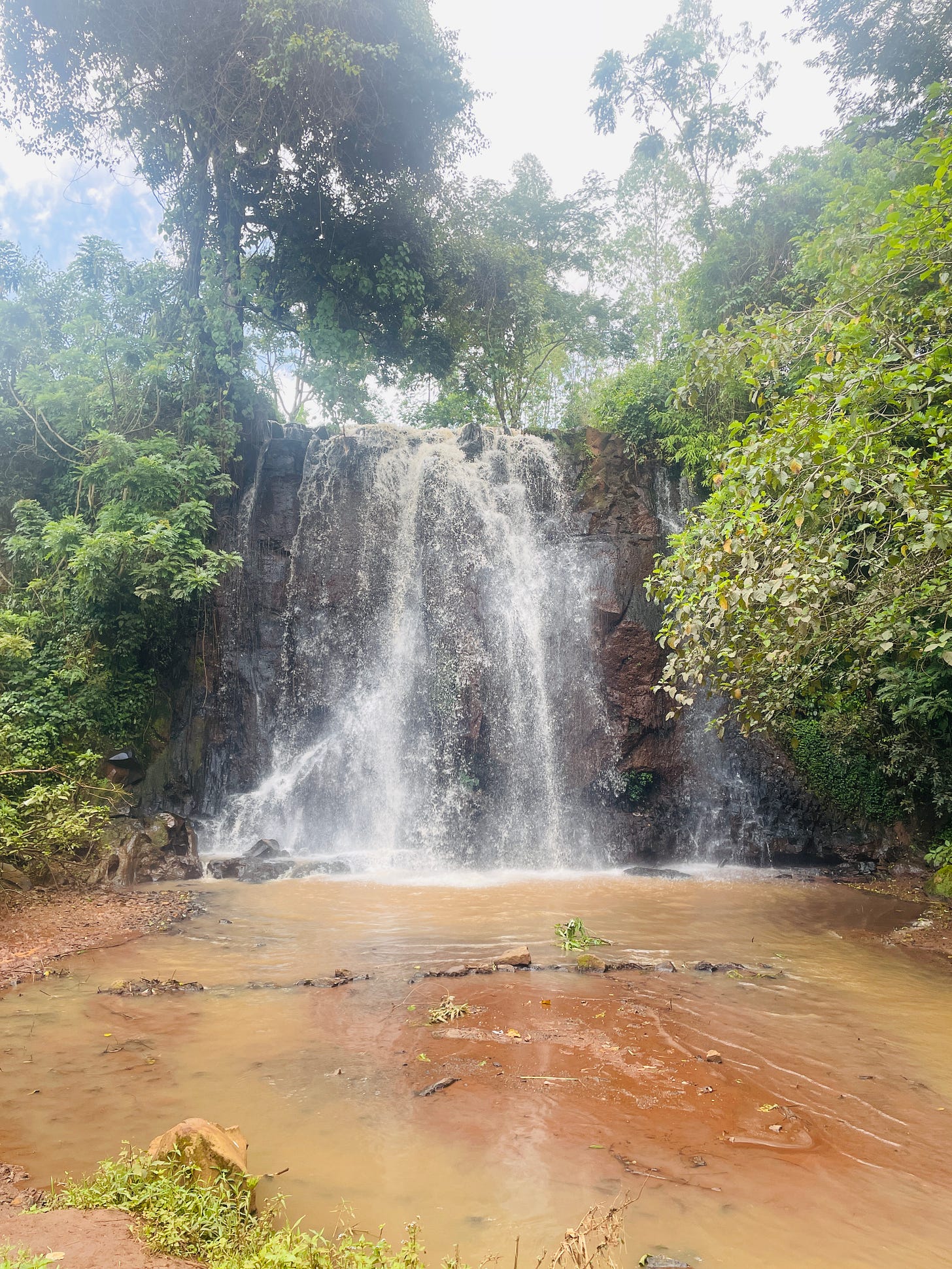
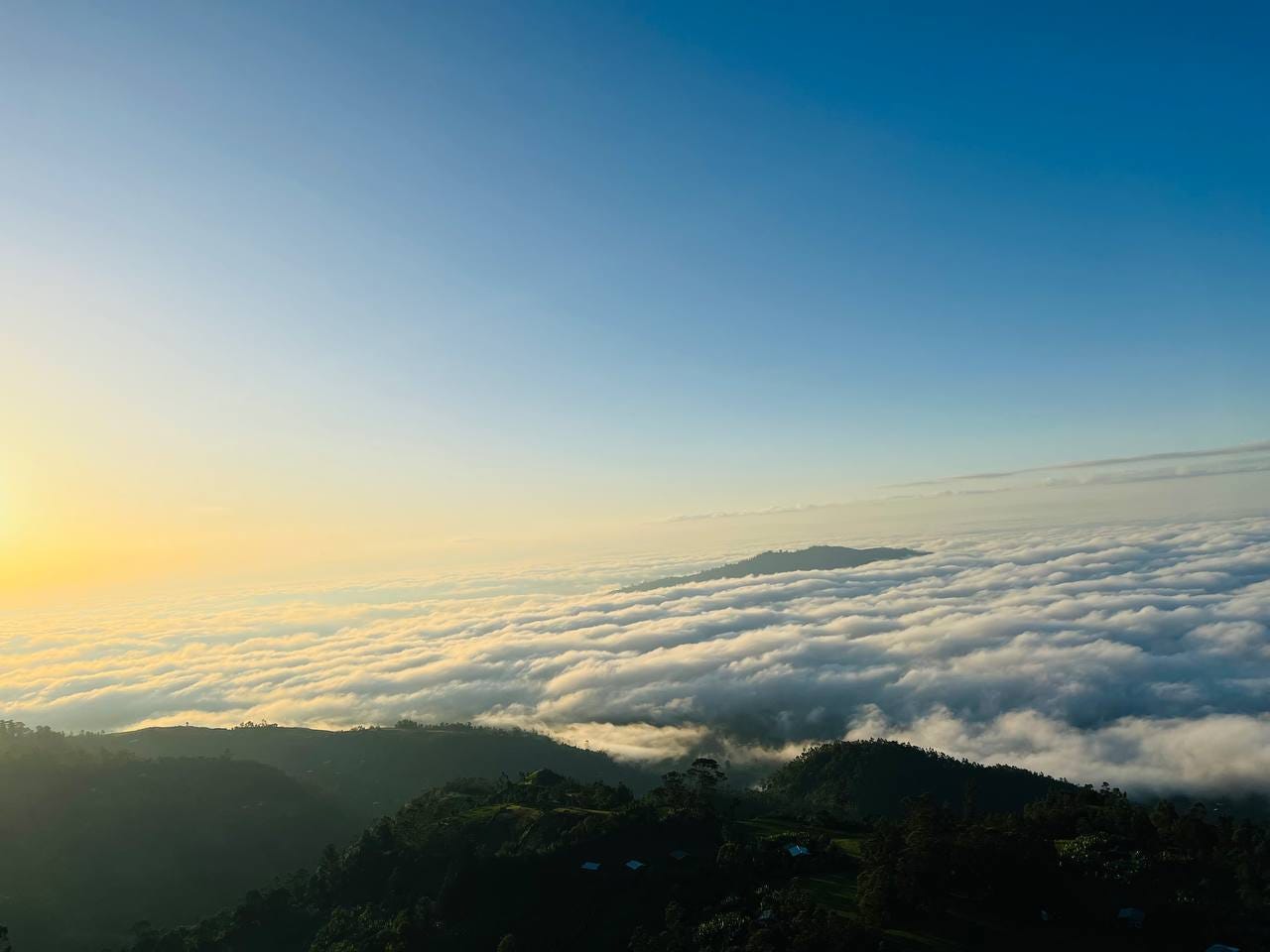
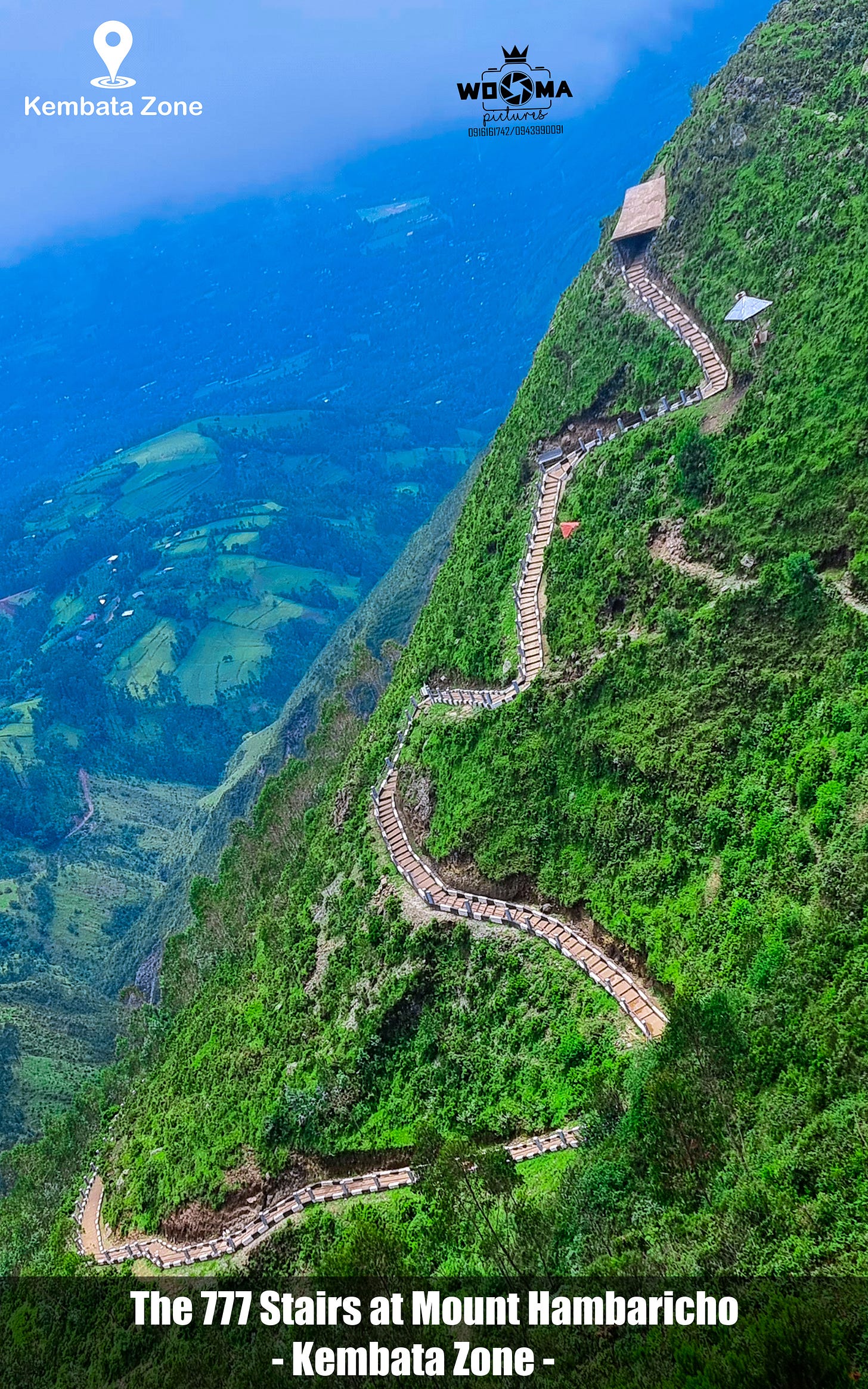

Thank you for promoting Kembata by beautiful words. We thank you Map of Ethiopia.